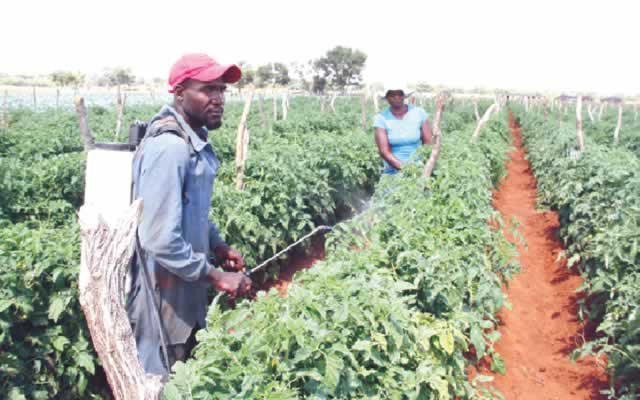‘Land underutilisation, climate change threat to food security’

Harare Bureau
THE effects of climate change and underutilisation of land are a major threat to national food security and the government should increase its efforts in addressing the issues if Zimbabwe is to become self-reliant in terms of its food requirements, analysts said.
Zimbabwe is an agro-based economy and the government has identified revitalisation of the sector and the agro-processing value chain as key to economic growth. According to the World Bank, economic growth originating from agriculture is known to be twice as effective in reducing poverty as gross domestic product growth originating from outside agriculture. It is for this reason that President Mugabe last week put agriculture as the top point in his state of the nation address although the growth targets were revised due to the effects of drought.
“We need hard driving policies from our government to achieve food security and land should be fully utilised; and be given to people with capacity to farm. The issue of underutilisation of land is a serious one and that needs to be addressed,” said Zimbabwe National Farmers Union President Garikai Msika said.
“Agriculture is not a hobby; it’s a full time business that needs full time attention. The land issue needs to be addressed.”
According to official statistics between 40-50 percent of land distributed under the government’s land reform programme is underutilised.
Policy makers should realise that climate change has become a reality and efforts should be directed to harnessing water and improving soil quality.
While efforts should be made to ensure sufficient utilisation of the farms, critical issues that also need to be considered in revamping agriculture are access to markets, infrastructure and availability of inputs.
Zimbabwean farmers have constantly suffered from post-harvest losses and poor prices and in some cases lack of payment especially from the Grain Marketing Board. The issue of creating markets for farmers could be addressed by bringing in companies in the agricultural value chain together, prompting payment of farmers and establishment of a commodity exchange.
If the statistics of the grain import bill are anything to go by, the fact that the government is only procuring 80,000 tonnes against 700,000 tonnes of maize deficit with the rest being procured by private sector is a clear testimony of the role private sector should play in resuscitating the agriculture sector.
“The million-dollar question is how we can turn the energy of private sector to support agriculture now as we’re moving into the rainy season,” said one analyst with a local research firm.
“Alternatively, if we’re to address fundamental problems affecting agriculture in Zimbabwe among other factors we’ve to address access to finance, markets and infrastructural issues like irrigation and access roads. One would like to find measures required to address these twin factors?
“We can get solutions if we continue to dialogue on these issues but quick fixes should come in the form of contract farming, commodity exchanges, public private partnerships/joint ventures and harmonisation of donors.
With regards to the commodity exchanges — a market on which multiple buyers and sellers trade commodity-linked contracts on the basis of rules and procedures laid down by the exchange — will act as a platform for trade in futures contracts, or for standardised contracts for future delivery. In other parts of the developing world, commodity exchanges may act in a broader range of ways, in order to stimulate trade in the commodities sector.
This may be through the use of instruments other than futures, such as the cash or “spot” trade for immediate delivery, forward contracts on the basis of warehouse receipts, or the trade of farmers’ repurchase agreements for financing known as “repos”. This provides for an efficient price discovery mechanism since a commodity exchange is ideally bringing in large number of buyers and sellers.
Overall, farmers say they are prepared to adopt a new culture of self-reliance in terms of funding and called upon the government to put in place enabling policies to support the farmers.
The Zimbabwe Commercial Farmers Union said that revitalisation of the sector requires agricultural finance, making 99 year leases and A1 permits transferrable, identifying productive farmers for support and creating a new culture where farmers mobilise own inputs.
ZCFU executive director Paul Zakariya said farmers are calling for a “Use it or Lose it” policy where those who are not utilising land should lose it.
Other measures would also include putting farmers into clusters and identifying those who are productively using land so that they benefit from agricultural finance which Zakariya said is key to the resuscitation of agriculture.
Estimates compiled by ZCFU show that Zimbabwe can produce about 1.2 million metric tonnes of maize with just 2,000 farmers producing on 100 hectares each at six tonnes per hectare. Mashonaland West remains the biggest maize producing province in the country.
Recommendations coming from other farmers are that the 99 year leases and the A1 permits should be transferrable so that financiers can repossess land from those who fail to service loans.











Comments